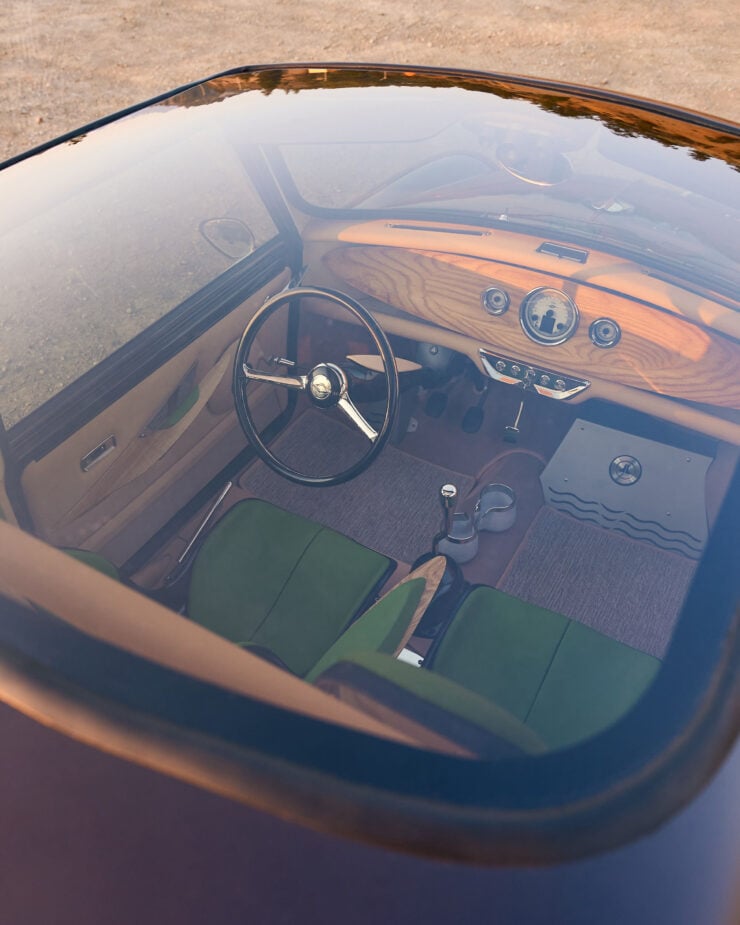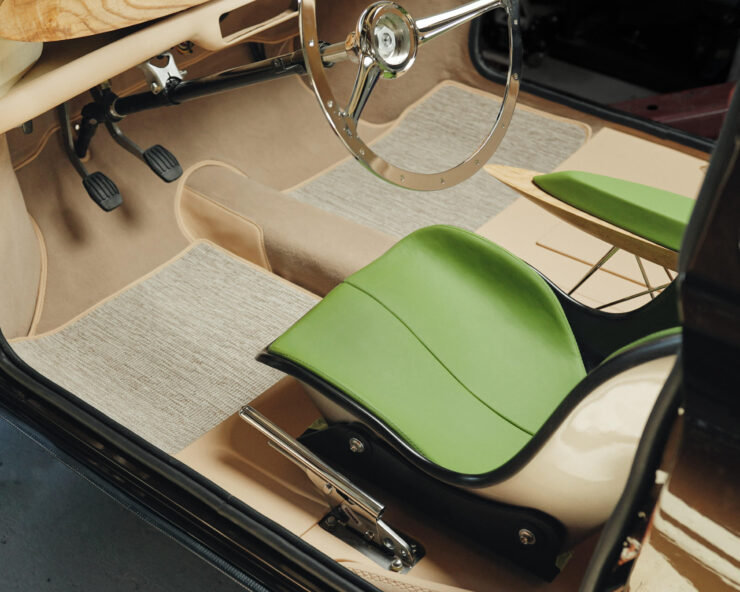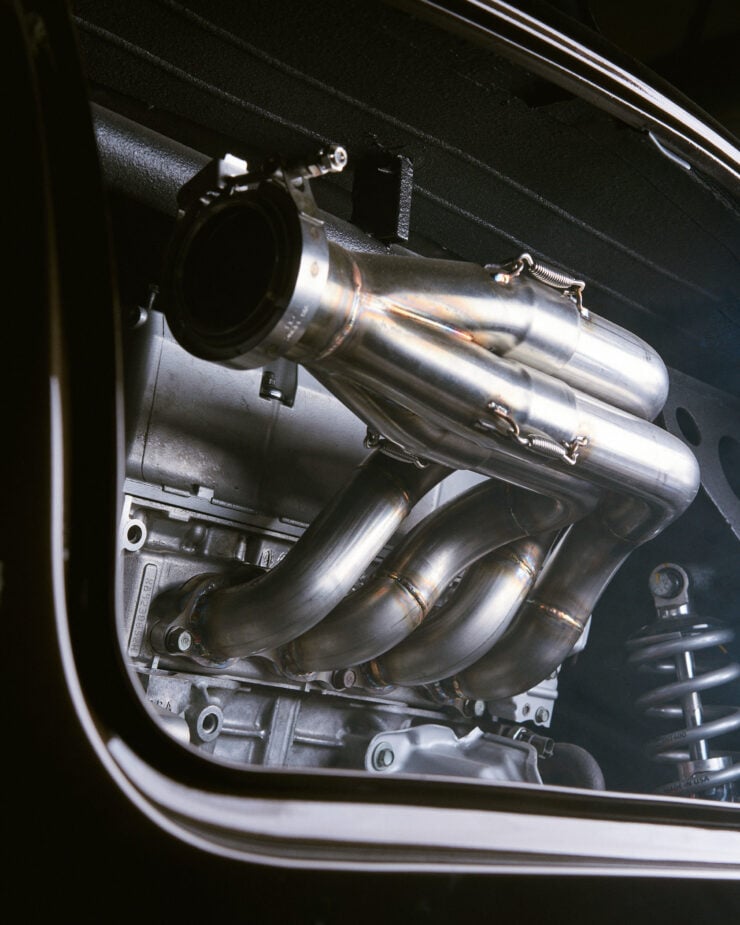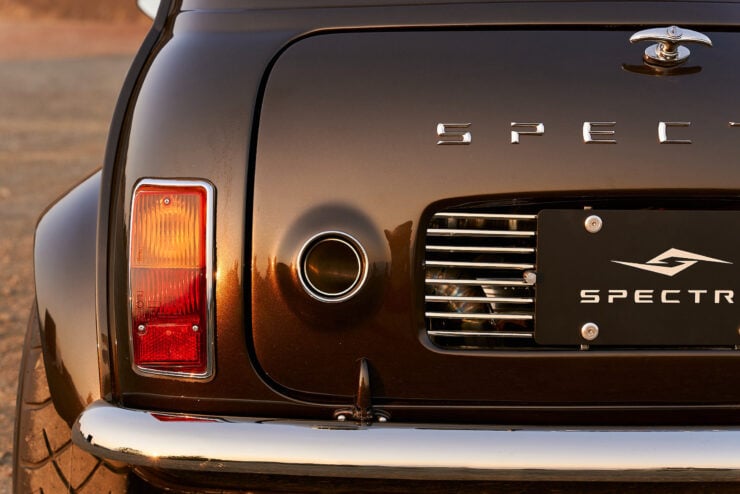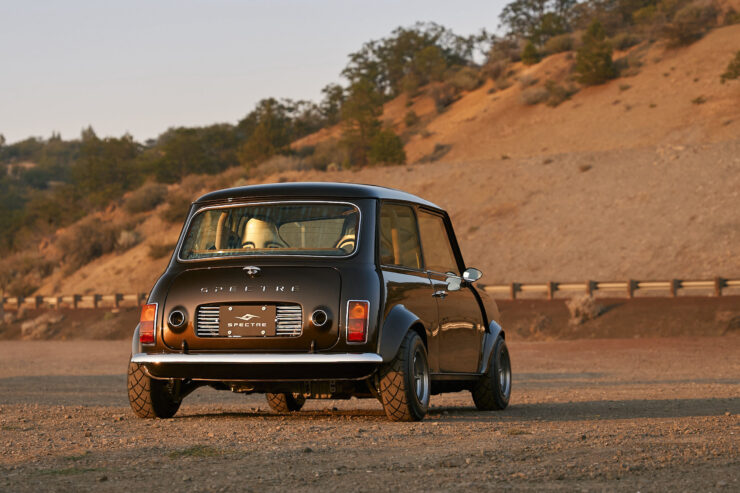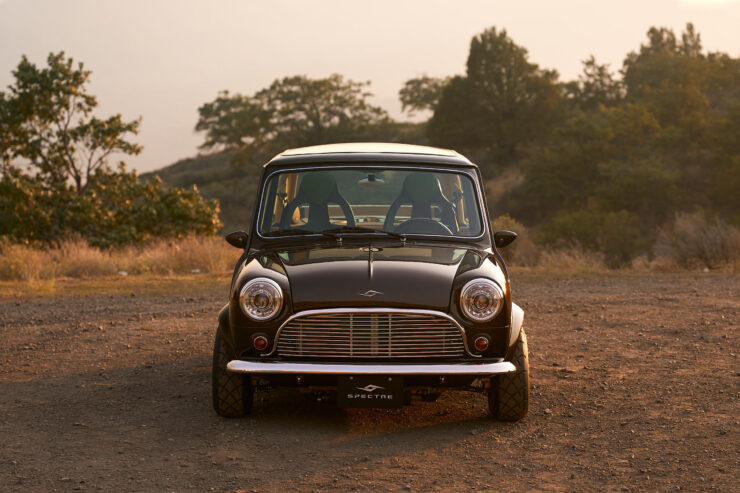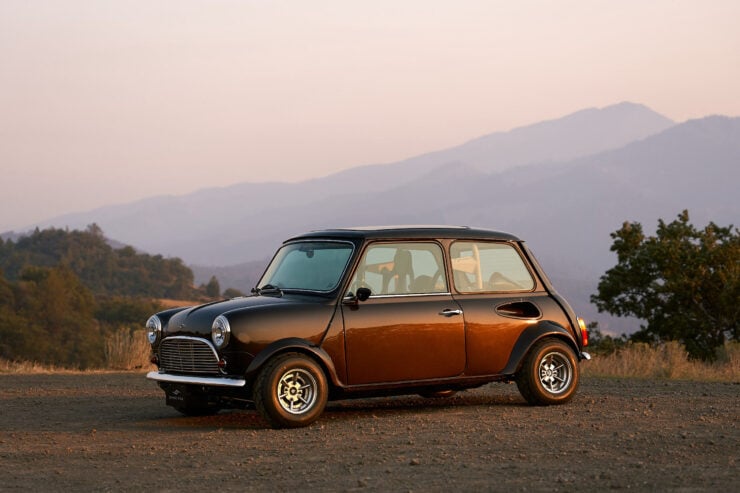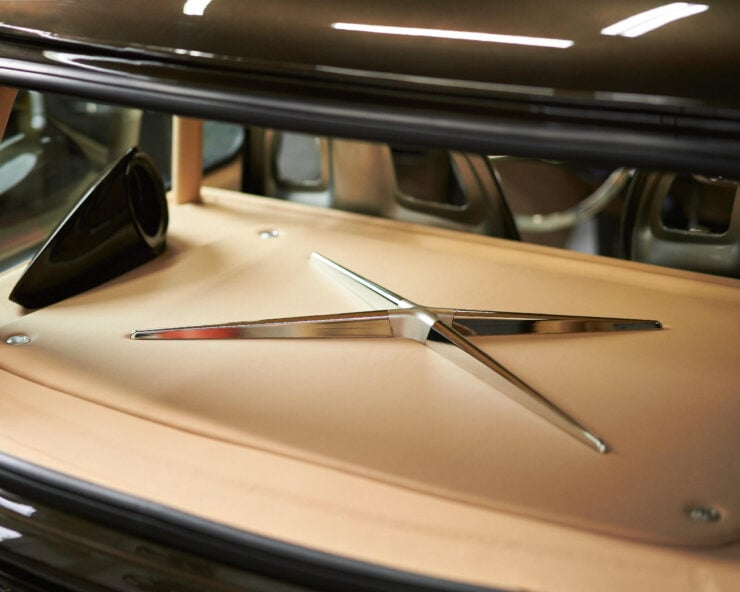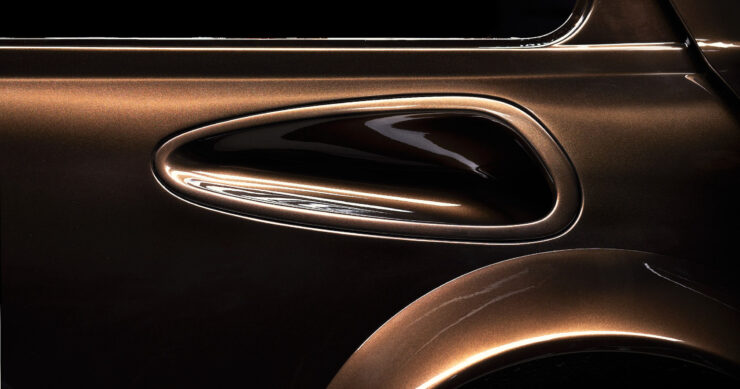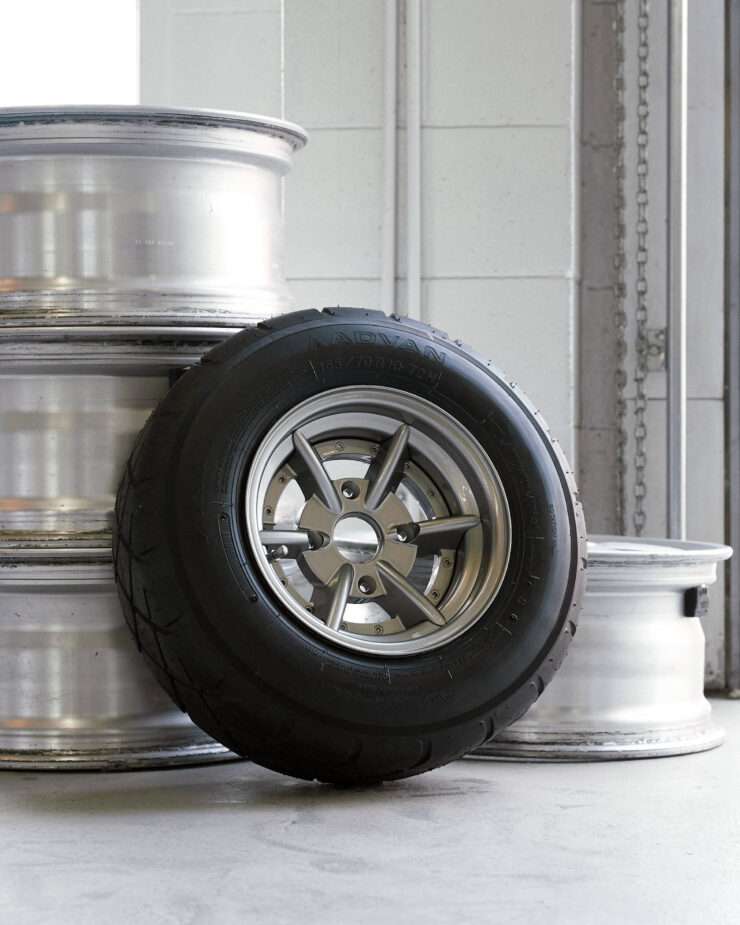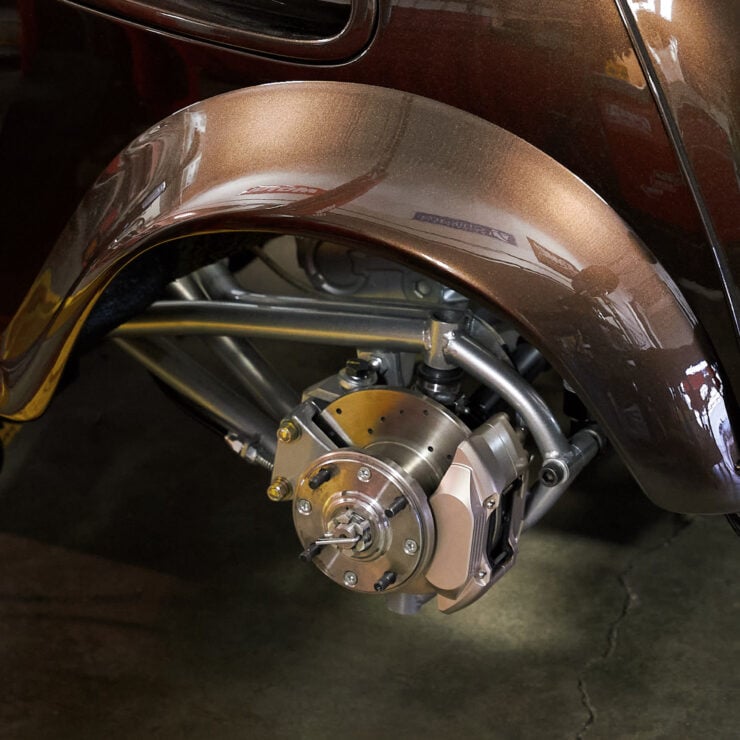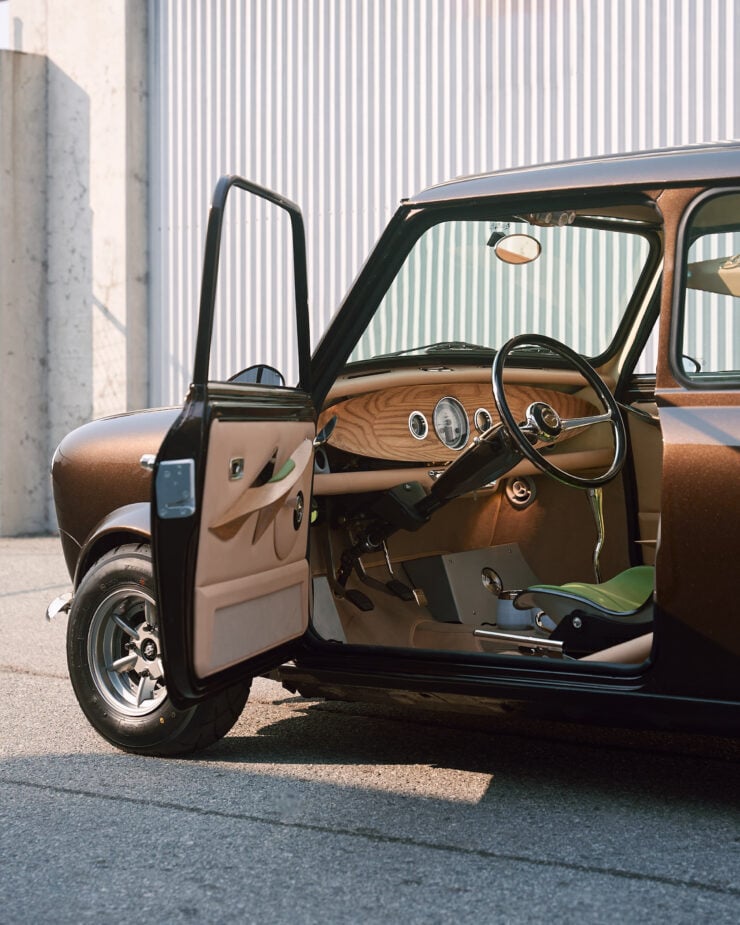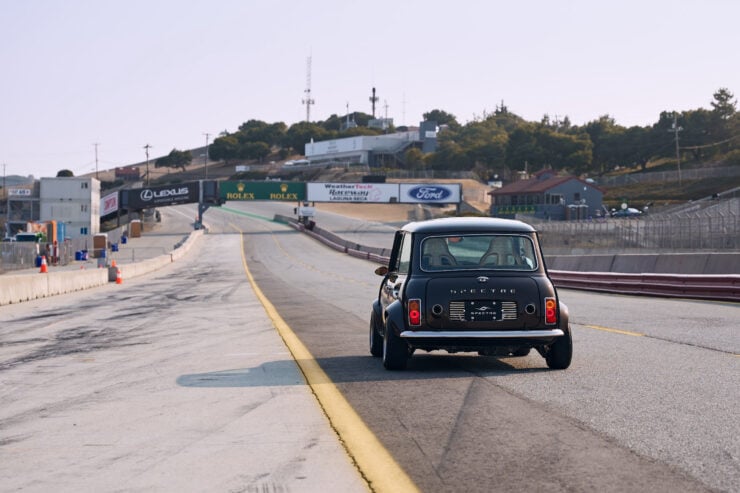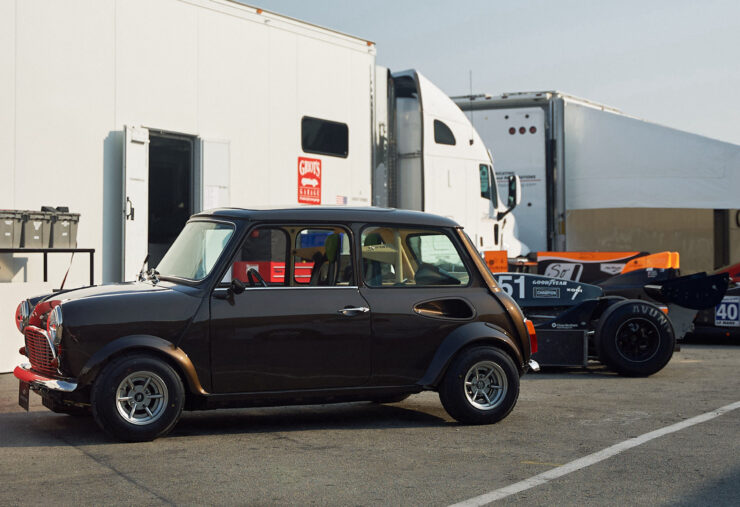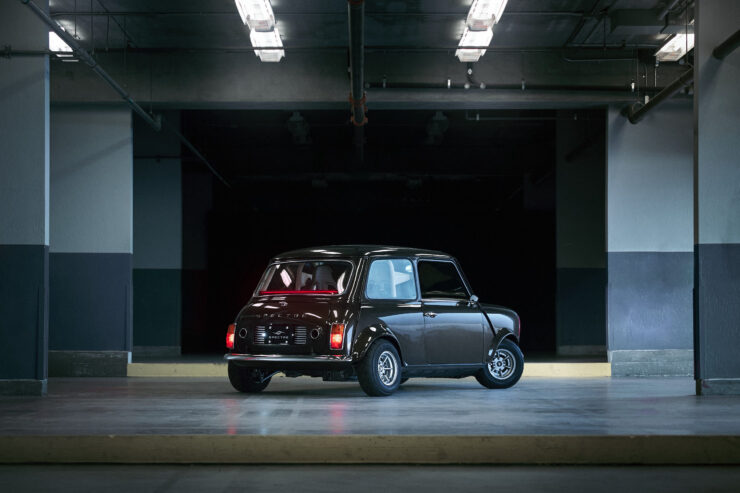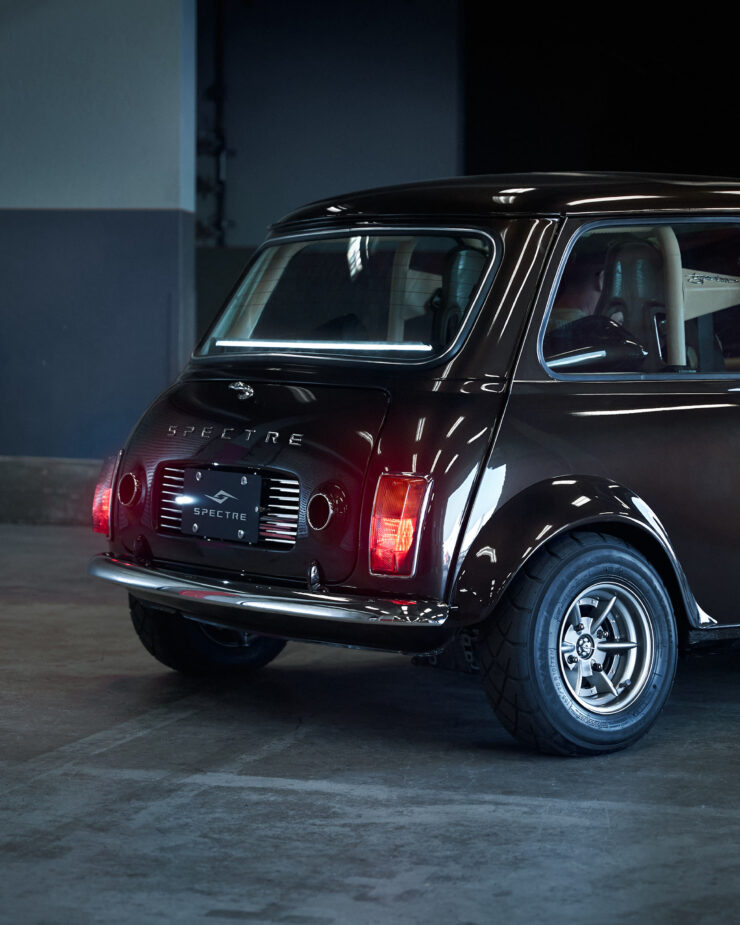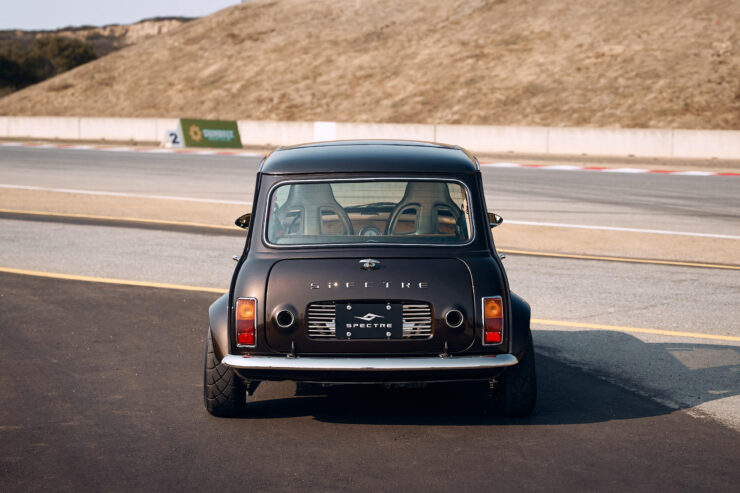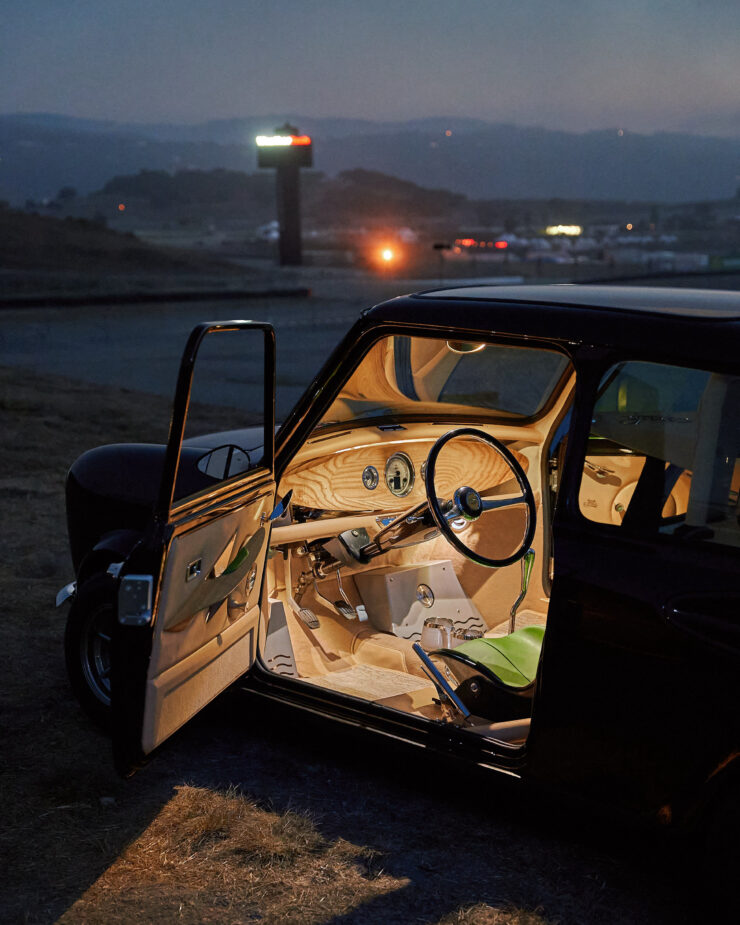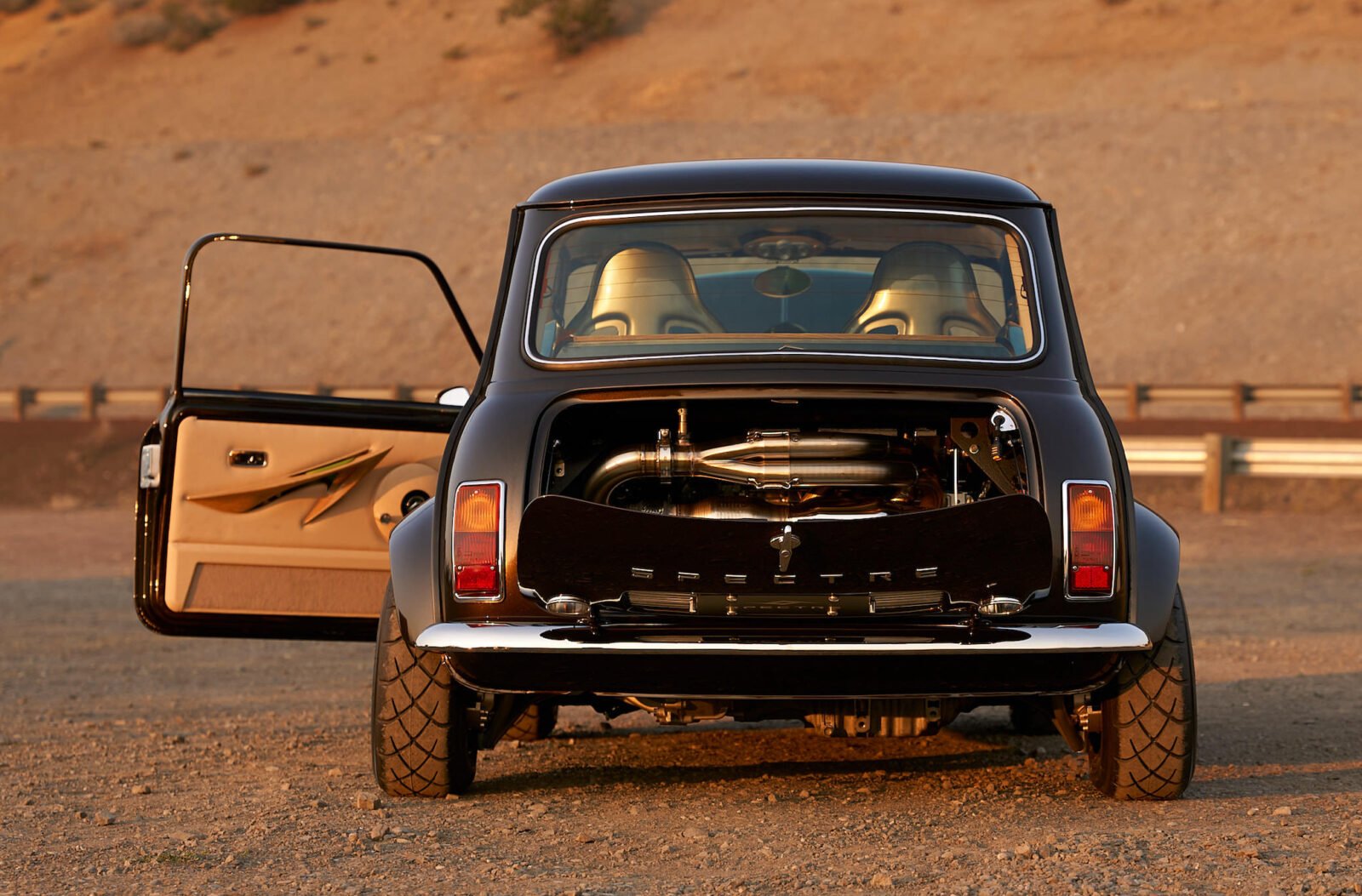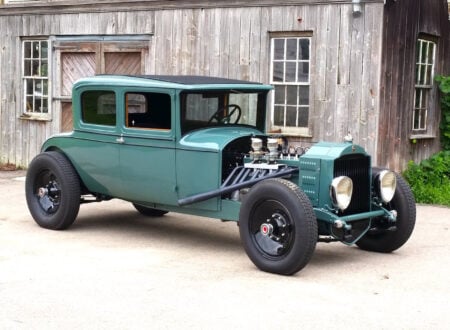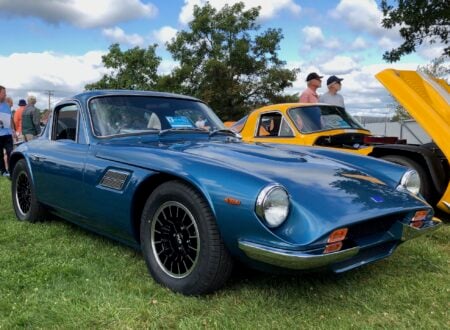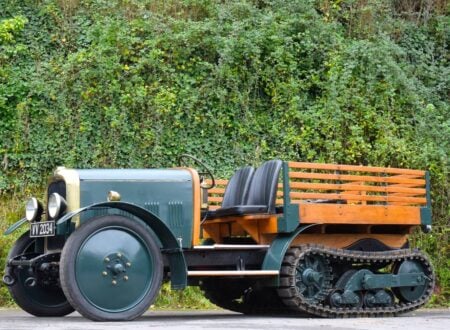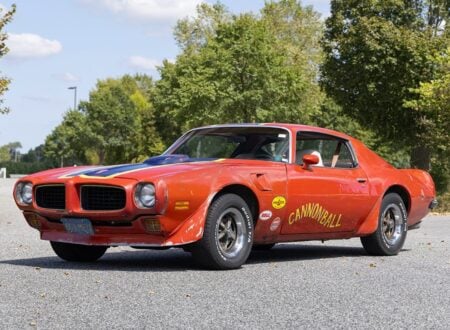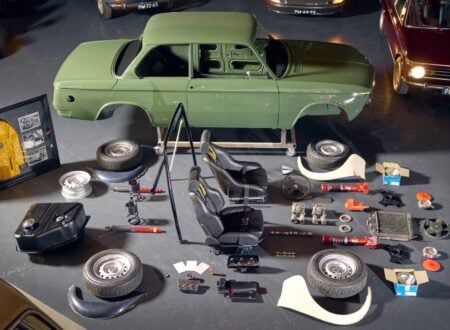The Spectre Type 10 is a Mini that’s been completely rebuilt into a 230 hp, mid-engined, rear-wheel drive miniature supercar.
We’ve all seen the remarkable reimagined Porsche 911s that roll out of the Singer workshop in California and the beautiful Eagle E-Types from England – the Spectre Type 10 is essentially what happens when this same philosophy is applied to the classic British Mini.
Fast Facts – The Spectre Type 10
- The Mini is a car that has enjoyed enduring popularity since it was first introduced in 1959. It now sits alongside other automotive touchstones like the Jeep, Porsche 911, VW Beetle, Land Rover, Jaguar E-Type, and Mustang as cars that are instantly recognizable even to non-car people.
- The Spectre Type 10 is a completely rebuilt classic Mini with a new rear subframe holding a 230+ rwhp Honda VTEC K20 engine powering the rear wheels.
- Great care was taken during the development and engineering phases the keep the exterior styling of the Mini as close to stock as possible – including the use of 10 inch wheels front and back.
- The first production run of the Spectre Type 10 will include just 10 cars, each with a $180,000 USD price tag and an options list that allows each owner to have the car tailored to them personally.
The Spectre Type 10 – A Mid-Engined Mini From Canada
There can be little doubt that the Spectre Type 10 is the most remarkable Mini in low-volume production today. The company’s Creative Director is Marco Lii, an Emmy award-winning animator who approached the interior design of the Type 10 with a blank slate. The results are unlike any other car on the road.
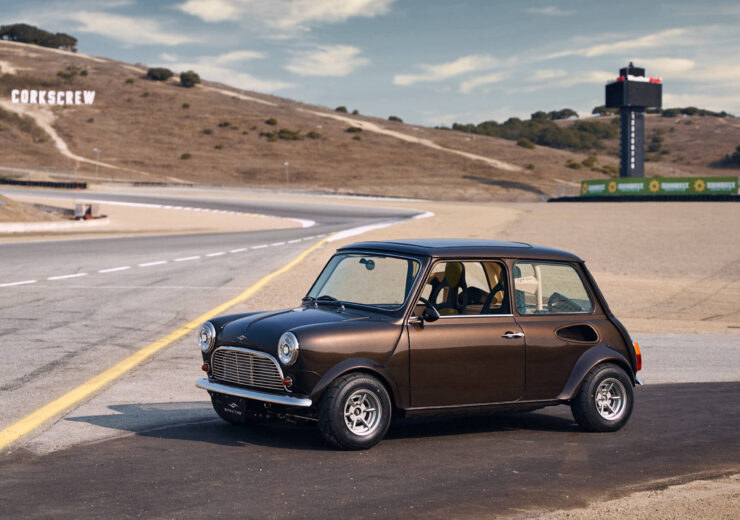

The team behind the Type 10 are all life-long fans of the original Mini, and so early on in the design phase they opted to keep the exterior of the car looking as close to stock as possible.
The only major clues as to what lies beneath are the air intake on the left side above the rear wheel arch and the new tailgate that now includes a grille with twin exhausts exiting out either side.
Far from being a standard shoehorn engine swap, the Type 10 is almost an entirely new bespoke car. As much of the original Mini unibody shell as possible is kept, however the completed vehicle features entirely new suspension, brakes, and wheels, with a new engine, transmission, and differential, an all new interior, and a new rear subframe with an integrated roll cage.
Spectre Type 10 – Design + Specifications
The original Mini is famous for its front-mounted four-cylinder engine with its integrated transmission which is mounted transversely, or sideways, in the front powering the front two wheels. This same fundamental layout is now used by the majority of compact cars in production.
Above Film: This short film is part of the Spectre Insider Series, each episode gives a look into a different aspect of the car. Click here to see the full series on YouTube.
The team at Spectre decided to flip this layout on its head, taking the 2.0 liter Honda VTEC K20 four-cylinder engine and installing it in the rear along with the 6-speed transmission to power the back wheels rather than the front.
This required an understandably vast amount of engineering to get right, new suspension had to be designed from scratch and the whole endeavor was made all the more complex by the decision to keep the original 10 inch wheel size.
Honda’s K20 engine is famous for its reliability, making it an ideal choice in an application like this with an engine bay of limited size. In its current state of tune it’s developing 230 bhp which is sent to the rear wheels via its 6-speed gearbox and limited slip differential.
The radiator and cooling systems are mounted up front, with insulated tubes running back and forth to the engine bay to keep everything cool.
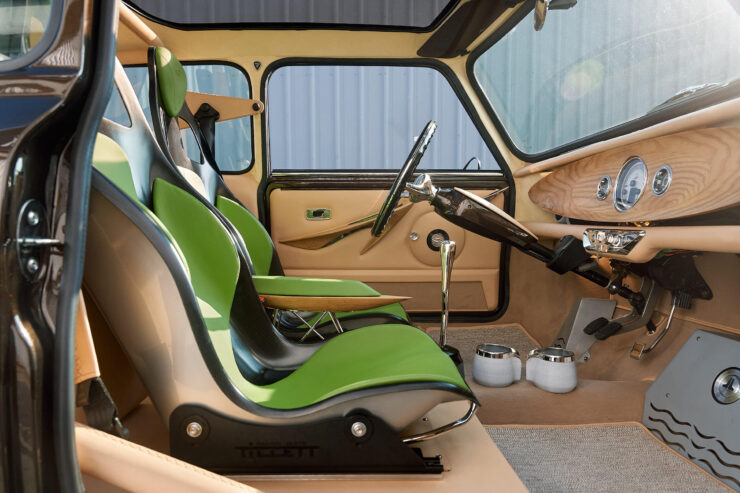

The inside of the Type 10 is entirely unique, Creative Director is Marco Lii explains that he took inspiration “from the Japanese mudroom, the Bauhaus movement, and mid-century modern design.”
The central arm rest, the dashboard, and door-mounted armrests are all carved from solid wood. The floor covering is a tatami-like mat, and the seats are carbon fiber fitted with carefully applied upholstery.
The first comment when many people make when they sit inside a classic Mini for the first time is that it seems more spacious than they expected, this is further enhanced on the Type 10 thanks to the car’s Sky Panel. Essentially a single sheet glass roof that showcases the interior to people on the outside, and showcases the landscape to the people on the inside.
The finished car is unquestionably a Mini and there’s no doubt it would be immediately recognized by its original designer Alec Issigonis. The re-engineering that’s been applied to the car has made it vastly quicker without losing its soul, and the interior is a work of art all on its own.
If you’d like to read more about the Spectre Type 10 or place your order for one of the 10 that are planned to be made you can click here to visit the official website.
